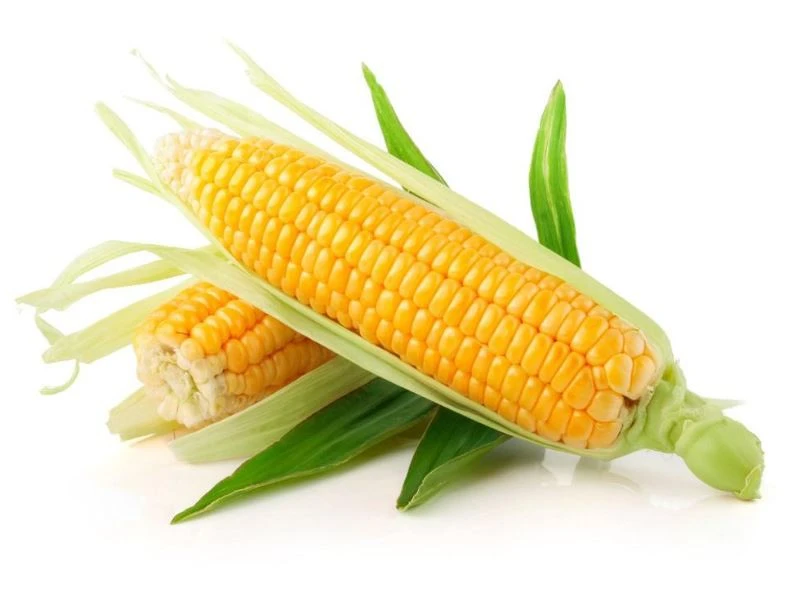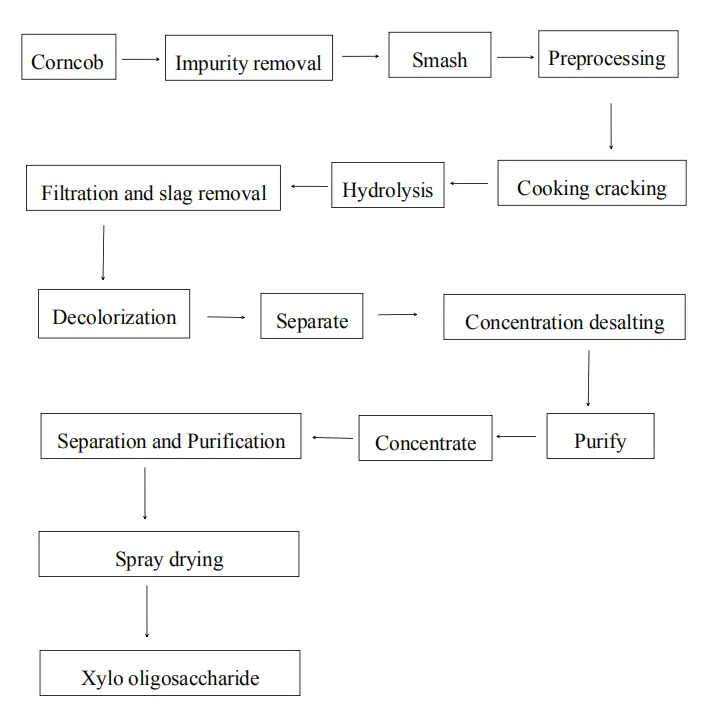Xylooligosaccharide powder and inulin are both well-known prebiotic filaments, but they have unmistakable characteristics that set them separated. XOS, inferred from xylan-rich plant materials, are shorter-chain oligosaccharides that are quickly aged in the intestine. Inulin, extricated from chicory root, is a longer-chain fructan with slower aging. The key contrasts lie in their chemical structure, maturation rate, and prebiotic impacts. XOS regularly appears to have quicker prebiotic activity and may be better tolerated at lower dosages, whereas inulin offers a broader range of health benefits due to its longer chain length. Understanding these contrasts is significant for formulators and customers looking to select the most reasonable prebiotic for particular well-being objectives and product applications.

How Xylooligosaccharides and Inulin Support Gut Microbiota Health?
Prebiotic Effects on Beneficial Bacteria
Both xylooligosaccharide powder and inulin play vital parts in supporting intestinal microbiota wellbeing, but they do so through marginally different components. XOS, being a more particular prebiotic, fundamentally invigorates the development of Bifidobacteria species. This selectivity can lead to a more focused approach in advancing intestinal wellbeing. Inulin, on the other hand, has a broader prebiotic impact, empowering the development of both Bifidobacteria and Lactobacilli. This more extensive run of impact can contribute to a more diverse intestinal microbiome.
Impact on Short-Chain Fatty Acid Production
The maturation of prebiotics by intestinal microbes comes about in the generation of short-chain fatty acids (SCFAs), which are vital for colon health. Organic xylooligosaccharide powder tends to create SCFAs more quickly due to its shorter chain length and speedier aging rate. This fast generation can lead to more prompt benefits, such as improved intestinal boundary work and decreased irritation. Inulin's slower maturation comes about in a more slow and sustained SCFA generation, which may be advantageous for long-term intestinal wellbeing maintenance.
Modulation of Gut pH and Pathogen Inhibition
Both XOS powder and inulin contribute to bringing down intestinal pH, making an environment less favorable for pathogenic microbes. In any case, the speedier aging of XOS may lead to a quicker pH diminishment, possibly promoting faster security against harmful microorganisms. Inulin's slower aging gives a more progressive pH tweak, which can be invaluable for people sensitive to fast changes in intestinal conditions. This distinction in pH tweak rates can be a significant factor when choosing between organic xylooligosaccharide and inulin for particular intestinal wellbeing applications.
Structural and Functional Differences Between XOS and Inulin
Chemical Composition and Molecular Structure
Xylooligosaccharide powder and inulin contrast in their chemical properties. XOS are composed of xylose units connected by β-1,4 glycosidic bonds, ordinarily with a degree of polymerization (DP) extending from 2 to 7. This shorter chain length contributes to XOS's quick maturation in the intestine. Inulin, on the other hand, is a fructan with β-2,1 connected fructose units, regularly with a much higher DP of 2 to 60. The longer chain length of inulin results in slower aging and distinctive useful properties compared to organic xylooligosaccharides.
Digestibility and Fermentation Patterns
The digestibility and aging designs of XOS powder and inulin play a vital part in their prebiotic impacts. XOS, due to its shorter chain length, is quickly matured in the proximal colon, leading to fast prebiotic impacts but possibly causing more prompt gas generation. Inulin's longer chains are absorbed more gradually and continuously through the colon, which can result in a more progressive onset of prebiotic impacts and possibly less gas production. This contrast in maturation designs can impact item definition choices, particularly when considering customer satisfaction and tolerance.
Stability and Technological Properties
When it comes to soundness and mechanical properties, organic xylooligosaccharides and inulin show diverse characteristics that influence their utilization in food and supplement definitions. XOS illustrates amazing soundness beneath different pH conditions and high temperatures, making it flexible for utilize in a wide extend of items, including acidic beverages and heated products. Inulin, whereas too moderately steady, may be more vulnerable to hydrolysis under acidic conditions or delayed warming. Furthermore, XOS powder regularly has a lower sweetness level compared to inulin, which can be an advantage in definitions where included sweetness is not craved. These steadiness and utilitarian contrasts play a noteworthy part in deciding the most appropriate prebiotic for particular item applications.

Choosing the Right Prebiotic for Functional Foods and Dietary Supplements
Efficacy Considerations
When selecting between xylooligosaccharide powder and inulin for utilitarian nourishments and dietary supplements, viability is an essential concern. XOS has appeared to have powerful prebiotic impacts at lower dosages, ordinarily 1-2 grams per day, making it an alluring alternative for items where negligible expansion is craved. Inulin frequently requires higher dosages, as a rule 5-10 grams day by day, to accomplish comparable prebiotic impacts. This contrast in viable measurement can altogether affect definition choices, particularly for items with constrained space for useful fixings. In addition, the fast aging of organic xylooligosaccharides may lead to faster perceptible benefits, which may be beneficial for shopper fulfillment and compliance.
Tolerance and Side Effects
Consumer resilience is a pivotal factor in choosing between XOS powder and inulin. Due to its fast maturation, XOS may cause mild gastrointestinal distress in a few people, especially at higher dosages. In any case, its lower compelling dosage frequently mitigates this issue. Inulin, whereas by and large well-tolerated, can in some cases lead to bloating or gas, particularly when consumed in larger amounts. The continuous maturation of inulin may make it a way better choice for people with sensitive stomach-related systems. Formulators must consider these resistance profiles when creating items for distinctive customer segments, adjusting prebiotic viability with comfort and acceptability.
Application Versatility
The flexibility of organic xylooligosaccharides and inulin in different applications is another key thought. XOS's tall steadiness over diverse pH levels and temperatures makes it appropriate for a wide extend of items, from refreshments to heated products. It has a negligible effect on taste and surface permits for simple consolidation without essentially modifying item characteristics. Inulin, with its longer chain length, can give extra useful benefits such as fat substitution and surface enhancement in certain applications. It's especially valuable in dairy items and as a fiber enhancement fix. The choice between XOS and inulin may, in this way, depend on the particular utilitarian necessities of the item, as well as desired tactile properties and preparation conditions.
Conclusion
In conclusion, whereas both xylooligosaccharides and inulin offer profitable prebiotic benefits, they have particular characteristics that make them appropriate for diverse applications. XOS stands out for its quick maturation, lower successful measurements, and high soundness, making it a fabulous choice for items requiring fast prebiotic activity without noteworthy definition changes. Inulin, with its continuous maturation and extra useful properties, is well-suited for applications where maintained prebiotic impacts and surface changes are craved. Eventually, the choice between XOS powder and inulin ought to be based on particular product objectives, target shopper needs, and definition requirements to guarantee ideal prebiotic adequacy and customer satisfaction.
FAQs
What is the suggested day by day dose for xylooligosaccharide powder?
The common successful dosage is 1-2 grams per day.
Is organic xylooligosaccharide powder appropriate for all age groups?
While by and large secure, it's best to consult a healthcare professional for particular age groups.
Can XOS powder be utilized in cooking and baking?
Yes, it's steady at high temperatures and can be utilized in different food applications.
How does organic xylooligosaccharide compare to other prebiotics in terms of effectiveness?
XOS is known for its strong prebiotic impacts at lower concentrations compared to numerous other prebiotics.
Are there any known side effects of devouring XOS powder?
Some people may involvement gentle gastrointestinal inconvenience, particularly at higher doses.
Experience the Prebiotic Power of Premium XOS Powder | Pioneer Biotech
At Pioneer Biotech, we specialize in creating high-quality natural xylooligosaccharide powder. As a driving producer and provider, our XOS powder is delivered in our FDA-registered production line, guaranteeing top-notch quality and security. With our ability in homegrown extricates and dynamic crude materials, we offer prevalent xylooligosaccharide items custom-made for wellbeing, pharmaceutical, and cosmetic businesses. Encounter the contrast with our premium XOS powder. For requests, contact us at sales@pioneerbiotech.com.
References
Gibson, G. R., et al. (2017). Expert consensus document: The International Scientific Association for Probiotics and Prebiotics (ISAPP) consensus statement on the definition and scope of prebiotics. Nature Reviews Gastroenterology & Hepatology, 14(8), 491-502.
Muthuramalingam, K., et al. (2019). Xylooligosaccharides: A novel prebiotic substrate for fermented dairy products. International Journal of Dairy Technology, 72(4), 523-535.
Roberfroid, M. B. (2007). Inulin-type fructans: functional food ingredients. The Journal of Nutrition, 137(11), 2493S-2502S.
Samanta, A. K., et al. (2015). Xylooligosaccharides as prebiotics from agricultural by-products: Production and applications. Bioactive Carbohydrates and Dietary Fibre, 5(1), 62-71.
Swennen, K., et al. (2006). The functional effects of the degree of polymerisation of inulin and oligofructose on appetite regulation and food intake in humans. Food Chemistry, 98(4), 628-640.
Yang, J., et al. (2015). Xylooligosaccharides: Production, physicochemical properties, and health benefits. Comprehensive Reviews in Food Science and Food Safety, 14(6), 619-628.




